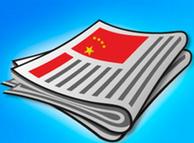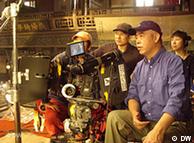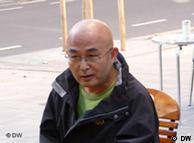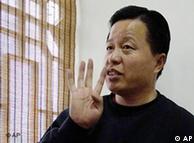
A market in the village of Sa Phin is packed with vendors from all over selling livestock, local corn whiskey and Chinese beer, vibrant clothing and household goods. More Photos »
By JENNIFER BLEYER
Published: October 27, 2010
MY first glimpse of the place that some call Vietnam’s Shangri-La came on a brisk spring afternoon as we were careening along a narrow road hemmed in by sheer limestone walls. Our driver made a hairpin turn and all at once the landscape erupted into a sweep of dazzling slopes, serrated ridges and hanging valleys. In the pocket of a mountain pass called Heaven’s Gate, Hoang Tuan Anh, who also served as our guide, stopped his pickup truck so we could gaze at the vista of radiant sky that had opened up before us. This was only the beginning, Mr. Anh said, as we resumed our upward drive. “We will go as high as the clouds!”
My husband, my daughter and I had been in Vietnam nearly a month before we visited Ha Giang province in the northern reaches of the country. It was a place I had never heard of, but Vietnamese acquaintances talked about the region as if it were the Land of Oz, their eyes widening as they incanted its name (pronounced Ha ZAHNG). Worldly young Hanoians said that one could not truly consider oneself Vietnamese until having been there. Expatriate friends implored us not to squander any opportunity to experience this holy grail, far from the country’s deeply trodden tourist track.
Such reverence, we soon learned, was warranted, and it wasn’t just because of the region’s spectacular landscape. In an ever-shrinking world, Ha Giang, with its uniquely preserved tribal culture (nearly 90 percent of the population is ethnic minorities), is one of those rare places that hasn’t been corralled by modernity or prepackaged for visitors. At least, not yet. During the past two decades, as Vietnam’s lowlands and urban centers have teetered on tracks of globalization and economic development, much of this distant 5,000-square-mile province has remained detached and frozen in the past.
That isolation has been reinforced by strained politics, but in recent years, border tensions stemming from a 1979 Chinese invasion have thawed, the government has poured money into improving the province’s roads and other infrastructure, and new, albeit modest, hotels have arrived. Middle-class Vietnamese already appear in throngs, and foreign visitors have begun trickling in as well — last year some 3,500 foreign tourists visited the region. That figure seems poised to grow since the Dong Van plateau, at the province’s northernmost edge, was named the country’s first Unesco-designated Global Geopark earlier this month, a status that the organization bestows on places of significant geological and cultural heritage. The 900-square-mile plateau is studded with ethereal karst formations, evidence of tectonic events that started molding the area over 400 million years ago.
It was that plateau that beckoned to us, as it does to most travelers who venture to the region.
The overnight train from Hanoi deposited us at dawn in Lao Cai, a blustery northern city about 70 miles west of Ha Giang. There we boarded a crammed local bus that chugged for eight hours through misty hills. We spent part of the afternoon lodged in a mudslide, only to be rescued by a hydraulic backhoe doubling as a tow truck. Our 11-month-old daughter craned her head and stared quizzically through it all, as if we were toting her through some particularly mountainous corner of the Upper West Side.
In Ha Giang’s sleepy provincial capital, the city of Ha Giang, we were met by Mr. Anh, our guide of Tay ethnicity with whom we had arranged a three-day tour — first to Dong Van, a town that was less than two miles from the Chinese border, and then along a mountain road to the town of Meo Vac. Mr. Anh escorted us to the concrete headquarters of the immigration police to procure $10 permits from an unsmiling official. Although the requirement was abolished in most of the country in 1993, foreigners are still expected to obtain permits to tour Ha Giang, a Communist rite of the rubber-stamping variety so seldom experienced by travelers in modern Vietnam as to seem almost quaint.
Later, as we barreled past the limits of Ha Giang city into the area’s remarkable landscape, Mr. Anh, a garrulous man in his late 30s who had studied in England and lived in Hanoi before returning to his native Ha Giang, recounted how his parents would spend days during their youth walking the winding route to Dong Van before there were paved roads. Our trip, he said, would take a mere six hours.
THE story of Ha Giang is in many ways the story of the proud and independent Hmong who, following the Tay and other ethnic groups, began migrating there in the late 18th century, fleeing unrest in southern China. In Ha Giang, they found the high altitudes they were accustomed to, and alkaline soil in which their opium poppy crops would flourish.
Buffeted by the political winds that blew through Vietnam in the past century, the Hmong and other minorities occasionally rebelled but mostly cooperated with the French colonists and, subsequently, with the ruling Viet Minh, who promised them a degree of autonomy in exchange for their support. (They ultimately reneged on that promise.) The overriding desire to remain free and secure was challenged during the 1979 Chinese invasion; border flare-ups persisted for years, but by 1991, relations were normalized between the two countries, and negotiations led to a final decision last year about where the 800-mile border would be. Although one of the poorest provinces in Vietnam, with little industry besides mining and agriculture, Ha Giang was once again safe for the Hmong and others, and visitors began to show up.
Mr. Anh expounded on this history as we huddled around a table in the blue-walled dining room of the Rocky Plateau Hotel, a former government guesthouse on Dong Van’s main thoroughfare that he had recently acquired and renovated as a 16-room hotel with creature comforts (hot water, satellite television) and a degree of modern flair (airy white lobby, faux Pop Art paintings). Our room, oddly appointed with three queen-size beds, was comfortable, fitted with wooden furniture and a window looking out at a breathtaking wall of dappled rock. This would be our base for the next three days, under the affable care of Mr. Anh and his staff of polite local teenagers.
This coziness was in stark contrast to our initial impression of the town. It had been eerily quiet when we’d rolled into Dong Van, where cars and telephones are almost nonexistent and electricity is scant. The windows of weathered Chinese-style houses framed scenes lighted by flickering oil lamps: leathery-faced men knocking back glasses of home-brewed corn whiskey; mothers with babies balanced on their hips ladling rice. Some boys carried a dead body down the street; wrapped in a red cloth, only its bony feet were visible. It felt as if we’d alighted upon an Asian version of the American Wild West.
Dinner at Mr. Anh’s hotel that night — stewed tomatoes, boiled chicken, strips of garlicky sautéed morning-glory, a heaping plate of white rice and fresh chili sauce flecked with onions and cilantro — was the savory stuff of fantasy after a long day of travel. As we left the dining room, the only other guests at the hotel, a middle-aged British couple, walked in. We excitedly said hello but they responded curtly, making clear that they did not want to chat, and we wondered if we had punctured their Livingstonian fantasy of being the sole foreigners in town.
Dong Van snapped to life at dawn, seeming much as it probably did on a late-spring morning in the 18th century. Hmong women wearing vivid pink and green headdresses filed down from their hilltop abodes carrying heavy bamboo baskets of corn and vegetables to the town market, where miners in black Mandarin-collared shirts slurped noodle soup from tin bowls. Traders hustled tobacco, tea and homemade ginseng tonic. Farmers steered water buffalo around the market’s edge.
We lingered inside a century-old trader’s house that has been transformed into Café Pho Co, enjoying thick mango shakes and strong coffee, before plunging back into the market in search of breakfast. From one woman, we bought wads of sticky black bean paste wrapped in tobacco leaves and tied like pretty packages; from another there were warm slices of bean curd. A Hmong specialty of steamed, golden corn bread was sublime. Seated on wooden benches, we wolfed down a half-dozen thick pieces while the market sellers angled for turns holding our daughter.
We needed the sustenance. Sua, a young White Hmong woman who worked at the hotel, planned to lead us on a hike in the countryside. Dressed in a traditional hand-woven hemp skirt and indigo blue head scarf, Sua, who spoke no English, informed us of her plan by smilingly typing out a Vietnamese phrase on her cellphone that Mr. Anh translated for us: “I will take you on the small, beautiful trail.”
Its beauty was certain, but its smallness was surely a matter of perspective. For five hours, we followed Sua into the hills, huffing and sweating on a web of narrow, remarkably steep trails that serve as an everyday thoroughfare for locals tramping between their hamlets, their fields and Dong Van. In a speck of a village about an hour into the hike, a uniformed Vietnamese official halted us and ordered us into the local committee building. Seating us in front of him like reprimanded schoolchildren, he inscribed our passport numbers in a dusty, ancient ledger while local villagers popped their heads in to smile and stare. We offered them litchis while waiting out our detainment, and everyone graciously accepted the fruit, except for our government interlocutor.
That anachronistic bit of provincial red tape was worth it. After scaling a difficult incline just beyond the village, we were soon standing before an unearthly panorama of karst formations in the shape of giant upturned egg cartons. Unlike most mountain ranges in which erosion carves only the surface, the high composition of limestone causes much of the plateau to erode below as well as above the ground. The result is a surrealistic vista of giant cones, towers, pyramids, caves and sinkholes.
Subterranean erosion is also responsible for the area’s isolated valleys, which make traversing the landscape such an arduous up-and-down affair. And because rainwater sinks deep into the earth, a large part of the plateau is technically desert, rendering even more remarkable the hardy people who carve their lives on this barely arable land. On soaring shafts of stone, cultivated corn billows between rocks. Homesteads are perilously fastened to the slopes. Bursts of red and green flash near mountain peaks where brightly clothed women move about, tending to their crops.
Distant explosions of road-clearing dynamite mingled with the whistles of Hmong woodwinds played by young goatherds. As we passed a mud-walled house, we heard chanting and the clanging of a gong. Using gestures, we asked Sua if we could approach. With a comatose expression, she indicated that someone had recently died there, and we assumed that a shaman was purifying the house. We couldn’t help but wonder if it was the same dead person we’d seen the night before.
NEAR the tiny town of Sa Phin, 10 miles west of Dong Van, the landscape settles down slightly. According to Mr. Anh, who drove us to the area after we had rested from Sua’s tour, the comparatively gentle, turtle-shell shape of one hill there was deemed auspicious by a fortune teller who, some 100 years ago, was enlisted by a Hmong warlord to divine the most auspicious place to construct his palace.
“The fortune teller told the king, ‘If you build your house here, you will reign forever,’ ” Mr. Anh said.
The warlord was Vuong Chinh Duc, who, near the turn of the 20th century, helped provide the French a steady supply of opium, a key product in the colonial economy. Despite the fortune teller’s predictions, the Vuong clan’s power has been largely dissolved, but the palace has been preserved as a handsome museum.
We crept through the hushed palace, with its ornate teak furniture and luxurious tub that had been used for bathing in goat milk. In a corner of the royal lair, an intricately carved platform was identified as the Vuongs’ opium-smoking bed. Echoing throughout the palace was the inestimable importance of opium, which was produced legally in Vietnam until 1993. The residence had storage space for opium, and pillars had been chiseled with the shapes of globular poppy buds.
The next morning we set out early on the last leg of our exploration of Ha Giang: the 14-mile journey from Dong Van to the town of Meo Vac, a drive that some say is the most splendid in the country. Built beginning in 1959, the slender road linking the two towns clings to the side of a massive gorge and is not for the weak of stomach.
Mr. Anh steered his truck slowly as we gaped at the views. The Nho Que River, 2,600 feet down at the bottom of the gorge, was little more than an ochre thread. The road rose up and dipped, twisted and soared. At the Ma Pi Leng pass, a plaque commemorated workers who died building the road, noting that the cutting of the pass took 11 months. Hmong and Tay families zipped by us on motorbikes, unfazed by the dizzying drop-off beside them.
In Meo Vac, a town of roughly the same size and vintage as Dong Van, Mr. Anh told us about the local annual “love market” that is held near there each March, when ethnic minorities from all over the area flock here in search of romantic partners. Circling back, we passed through Lung Phin, where another market is held every six days in accordance with the lunar calendar and thousands of people representing every tribe in the region congregate in a burst of rural commerce. Mr. Anh regaled us with images of the frenetic exchange of horse saddles, dried mushrooms, gingered sausages, water buffalo, cardamom pods, plastic shoes, bright ribbons and embroidery thread, all traded along with gossip from the hilltops and accompanied by bowls of horse meat soup and shots of corn whiskey.
“Next time you come here, you must make sure to see it,” Mr. Anh said.
We nodded, flush with fantasies of returning someday. For now, the town was still, with just a few old men smoking bamboo pipes and children running in the street. We gazed back at them, and the road unspooling behind us, and embarked on the long descent to the bottom of the rocky plateau.
IF YOU GO
GETTING THERE
Spring and fall are the best months for travel in Ha Giang; the weather is temperate and generally clear.
Visas are required for American visitors — a one-month, single-entry visa is $20 through My Vietnam Visa (myvietnamvisa.com), an online agency that arranges for documents to be picked up upon arrival at Vietnam’s international airports, where an additional $25 “stamping fee” must be paid.
The easiest way to get to Ha Giang is by private car or motorbike from Hanoi. For public transportation options, forgo the clunky sleeper train-bus combination that we used and instead take one of six daily buses from Hanoi’s My Dinh bus station straight to Ha Giang town. The buses leave between 4 and 6 a.m., and the seven-hour trip costs 120,000 Vietnamese dong (about $6.35 at 19,000 dong to the dollar). From there, public transportation is extremely limited, and it is advisable to rent a car or motorbike.
GETTING AROUND
There are several companies that offer tours of Ha Giang by motorbike or car that begin and end in Hanoi and include an English-speaking guide, accommodations, meals, permits and entrance fees. Most can be customized to include local market days if they coincide with a trip. Prices are per person based on a group of four, and exclude airfare. They cite their rates in U.S. dollars.
Exotissimo Travel (84-8-3827-2911; exotissimo.com) offers a five-day loop by car through Ha Giang, including visits to the towns of Dong Van, Meo Vac, Lung Cu and Yen Minh, for $560.
Free Wheelin’ Tours (84-4-3926-2743; freewheelin-tours.com), a small company that specializes in sustainable tourism coupled with local development projects, offers an eight-day custom motorbike tour of the northern highlands, including Ha Giang, for $960.
Offroad Vietnam (84-9-1304-7509; offroadvietnam.com) has eight-day custom motorbike trips around the northern highlands, including Ha Giang, from $880 to $1,120 depending on the quality of motorbike rented, or by car for $1,140.
Karst Plateau Travel (84-91-545-8668; karstplateau@gmail.com) is the company run by Hoang Tuan Anh, who arranges car tours leaving either from Hanoi or Ha Giang town and can be booked to lead them himself — a special treat since he’s a native of the area and knows it well. A five-day tour leaving from Hanoi starts at $500.
WHERE TO STAY
In Dong Van, the 16-room Rocky Plateau Hotel is basic and comfortable, with doubles for 300,000 dong. Reservations can be made through Mr. Anh (84-9-154-8668; karstplateau@gmail.com).
In Ha Giang town, Huy Hoan Hotel (14 Phuong Nguyen Trai; 84-21-9386-1288) is a modern, clean option with large rooms and private bathrooms. Doubles are 250,000 dong.
Twenty-five miles south of Ha Giang town, Pan Hou Village (84-21-9383-3565; www.panhouvillage.com) is a charming eco-resort with 30 rooms in traditional stilt houses; doubles start at $57, including breakfast. Beautifully designed with a restaurant, bar and small spa, it’s a good base to use for exploring the northernmost parts of Ha Giang.






